Gem Mining Virginia: A Miner’s Ultimate Guide
From the Blue Ridge Mountains to the Coastal Plain, Virginia has long been known for its rich geological diversity. Gem mining in the state draws enthusiasts eager to uncover dazzling treasures beneath the earth. In this article, we will guide you through the captivating world of Virginia’s gemstones, from their history and significance to the best spots for finding them.
The Most Popular Gemstones in Virginia
Virginia is blessed with an array of gemstones, each with its unique character and allure. Ranging from commonly found minerals to rarer gems that are a delight to stumble upon, Virginia offers a plethora of treasures waiting to be unearthed. Here’s a closer look:
Table 1: Rare Gemstones in Virginia
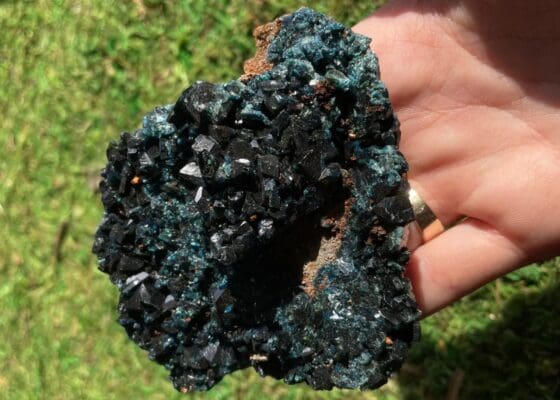
| Gemstone | Description |
|---|---|
| Virginia Blue Sapphire | Known for its deep azure hue, this sapphire is exclusive to Virginia. |
| Brookite | A rare titanium oxide mineral, often brown or black in color. It’s notable for its unique, sharp crystal shapes. |
| Talc | While talc is known globally, finding large, gem-quality specimens in Virginia is a rarity. It’s the softest mineral, often used in talcum powder. |
| Lazulite | A striking blue mineral, often confused with lapis lazuli. Its deep coloration is much sought after. |
| Epidote | Characterized by its greenish-black hue, this gem is often associated with metamorphic rocks. |
Table 2: Common Gemstones in Virginia

| Gemstone | Description |
|---|---|
| Quartz | One of the most abundant minerals, it can be found in various forms such as amethyst, rose quartz, and smoky quartz. |
| Garnet | Known for its deep red color, it’s prevalent in metamorphic rocks. |
| Amazonite | A greenish-blue variety of feldspar, commonly found in the state, especially in Amelia County. |
| Tourmaline | Available in various colors, with black being the most common in Virginia. |
| Pyrite | Often called “fool’s gold” due to its metallic luster and pale brass-yellow hue. |
| Mica | A mineral known for its ability to separate into thin sheets. Common varieties in Virginia include muscovite and biotite. |
| Feldspar | This mineral group includes several species that yield gem-quality specimens, and it’s widespread in Virginia. |
| Kyanite | Distinctive for its blue color, Virginia is a significant producer of this mineral. |
| Apatite | Often found in various colors, ranging from transparent greenish-yellow to opaque blue. |
| Calcite | A common carbonate mineral, usually found in a wide range of colors and crystal forms. |
With such geological diversity, Virginia provides ample opportunities for both novice and seasoned gem hunters to discover a piece of nature’s beauty. Whether it’s the allure of the rare Virginia Blue Sapphire or the abundant quartz variants, there’s always something exciting waiting to be unearthed.
Top Gem Mining Locations in Virginia
- Morefield Mine in Amelia: Renowned for its amazonite, this mine is also a source of over 80 other minerals. Located in Amelia County, this site welcomes the public for a fee. Check their official website for the most up-to-date operating hours and entrance fees.
- Lucky Lake Gem and Mineral Mine in McKenney: This location is a hotspot for garnets, amethyst, and quartz. Situated in McKenney, gem hunters pay a per-day fee to dig. Seasonal hours are in effect, so it’s advisable to confirm before planning a trip.
- Fairfax Gold Fever in Fairfax: Though primarily gold-focused, you can occasionally discover gemstones amongst the streambeds. Open seasonally with various fee structures based on the type of panning or sluicing you wish to do.
- Spectrum Mine in Blue Ridge: Known for its diverse range of quartz crystals, Spectrum Mine is a favorite for families and enthusiasts alike. It’s open most of the year, but it’s best to check for specific times and fees.

- Virginia Gold & Gem Safari in Goldvein: Beyond its rich gold deposits, this location also boasts a variety of gems. Open mainly during the warmer months, it charges by the bucket.
- Shenandoah Valley Gem and Mineral Society in Waynesboro: While not a traditional mine, this society frequently organizes field trips to various gem and mineral sites. Their trips cater to members, but the public is often invited for a nominal fee.
- Digging in Virginia (DIV): Hosting several digs a year in various parts of the state, DIV is famous for its relic hunts, but gemstones can also be found. Each dig has its fee and specific rules.
- Virginia Beach Diamond Diggers: Focusing on the coastal regions, this group often unearths unique gems from the shores of Virginia Beach. While mostly a club for metal detecting, gem and fossil finds are also celebrated.
- Rappahannock River: Flowing from the Blue Ridge Mountains, this river is known for garnets and other precious stones. While there’s no specific fee for public sections of the river, always ensure you have permission to mine in any private areas.
- Dan River: Another significant waterway, the Dan River, is known for gold, but gems like quartz and garnet can also be found. As with all river locations, make sure to respect both public and private lands.
When planning a trip to any of these locations, it’s essential to verify operating hours, fees, and any necessary permits or permissions. With a little research and preparation, you’re well on your way to a successful gem hunting adventure in Virginia!
History of Gem Mining in Virginia
Virginia’s gem mining history is as deep and rich as the state’s varied topography. From the ancient Blue Ridge Mountains to the rolling Piedmont hills and the expansive Coastal Plain, the story of gem mining is woven into the tapestry of Virginia’s past.
Long before the arrival of European settlers, Native American tribes like the Powhatan, Monacan, and Mattaponi mined the region’s resources. They prized quartz for its sharpness, fashioning tools, and weapons from it. Moreover, they often used attractive minerals for ornamentation and ceremonial purposes, valuing the natural beauty of gems found within Virginia’s borders.
The 1800s witnessed a renewed and intensified interest in gem mining. Sparked by stories of valuable gems and minerals, a wave of prospectors descended upon the state. The Piedmont region became particularly notable during this period. It became evident that Virginia was not just agriculturally rich but held a vast potential of mineral wealth. Mines sprung up, and the economy around gem mining burgeoned.

One of the unique tales from this era is the discovery of the “Star of Virginia” garnet. Found in Amelia County, this 1,500-carat gem became a symbol of the vast untapped potential that lay beneath Virginia’s soil. Such finds boosted the state’s reputation and attracted not just miners, but also gemologists, collectors, and tourists.
However, as with many mining booms, there were also tales of hardship. The back-breaking work, the lure of riches, and the eventual market forces meant that not everyone struck it rich. Yet, the legacy of this era endures. Many of the mines established during the boom years still operate today, while others stand as monuments to a bygone era.
As we reflect on Virginia’s gem mining history, it’s essential to appreciate not just the glittering treasures extracted from the earth but also the human stories of perseverance, ambition, and discovery. In every gleaming gem or rough stone, there’s a tale of Virginia’s past waiting to be told.
Gem Mining Regulations in Virginia
Navigating the regulations surrounding gem mining in Virginia is crucial for anyone who’s interested in this rewarding pastime. While the thrill of unearthing treasures from the earth is undeniable, understanding and respecting the legal parameters ensures that hobbyists and professional miners can coexist sustainably with Virginia’s abundant natural resources.
Land Ownership and Permissions: Firstly, it’s essential to determine land ownership. While some lands are open to the public, many areas, especially the ones known for their mineral wealth, are private properties. Always seek permission from landowners before mining. This not only adheres to legal guidelines but also fosters a culture of respect and collaboration between landowners and miners.
Permits: State-owned lands might necessitate a permit. These permits, usually issued by the Virginia Department of Mines, Minerals, and Energy, often come with specific guidelines about where and how one can mine. Additionally, these permits might dictate what equipment can be used and the volume of material that can be removed. Before embarking on a mining expedition, ensure that you’re carrying all the necessary permits and that you’re familiar with their stipulations.
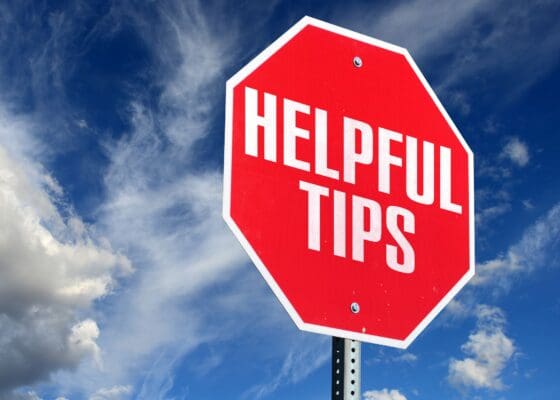
Environment and Conservation: Virginia is proud of its natural beauty and ecological diversity. The state has regulations to ensure that mining activities don’t harm the environment. This includes rules about diverting waterways, disrupting habitats, or using chemicals that might leach into the soil and water. Respecting these rules ensures the longevity of the mining hobby and the health of Virginia’s ecosystems.
Safety Regulations: Mines, especially older, abandoned ones, can be hazardous. The state has guidelines ensuring the safety of individuals in and around mining areas. These might include wearing appropriate gear, not entering certain zones, or adhering to specific mining methods.
Sales and Commercial Use: If you’re considering selling your finds or using them for commercial purposes, there’s another layer of regulations. These often revolve around the amount that can be extracted, the type of gems, and the requirement for additional permits or licenses for sale and distribution.
Fossils and Artifacts: Remember, Virginia is not just rich in gemstones but also in history. If you stumble upon historical artifacts or significant fossil specimens, there are regulations governing their collection, reporting, and ownership.
In conclusion, while gem mining in Virginia offers an exciting avenue to connect with the earth and its treasures, it’s essential to approach it with a sense of responsibility. By being well-informed and respectful of the regulations, one can ensure that this age-old practice can be enjoyed by future generations while preserving Virginia’s rich natural and cultural heritage.
Necessary Tools and Equipment for Gem Mining in Virginia
When embarking on a gem mining adventure in Virginia, having the right tools can be the difference between a rewarding experience and a fruitless endeavor. The state’s varied terrains and mining locales demand specific equipment tailored to the type of mining one undertakes. Here’s a comprehensive guide to the essentials:
Description: Particularly useful if you’re mining in a river or stream setting. Once you’ve scooped up some sediment, these screens help in washing away the sand and gravel, leaving behind heavier stones and potential gems.

🛒 Explore Top Screening Sets on Amazon
2. Shovels and Trowels: Digging deep or just scratching the surface?
Description: For digging into soft earth or moving aside debris. Depending on the area, a full-sized shovel might be required, but for many spots, especially rivers, a hand trowel is adequate.

🛒 Find Quality Shovels and Trowels on Amazon
3. Picks and Hammers: The backbone of any gem hunting endeavor.
Description: Sometimes known as a rock pick, this is a miner’s best friend. It’s instrumental in breaking apart larger rocks and accessing the minerals within. A quality hammer with a flat end for prying and a pointed tip for breaking rocks is ideal.

🛒 Check Out Best Picks and Hammers on Amazon
4. Buckets: Your trusted companion for carrying treasures.
Description: Useful for carrying water, especially if you’re away from a water source, and for storing the rocks and minerals you find.
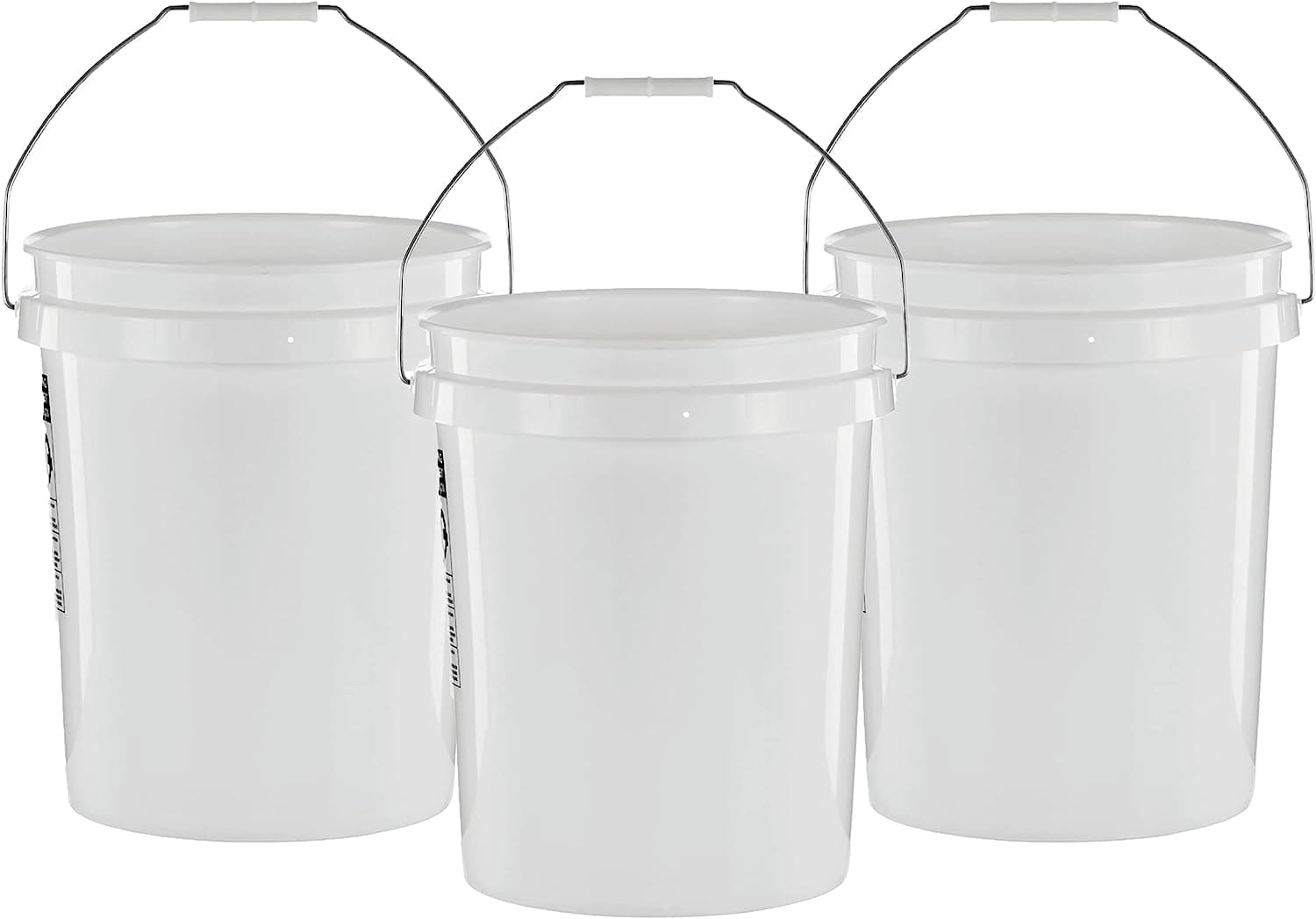
🛒 Shop for Reliable Buckets on Amazon
5. Magnifying Glass: Every detail counts!
Description: Once you’ve found a potential gem, you’ll want to take a closer look. A loupe provides a magnified view to inspect your find for clarity, quality, and details.

🛒 Grab Your Magnifying Glass on Amazon
6. Guidebooks and Field Guides: Knowledge at your fingertips.
Description: A guidebook on Virginia’s gems and minerals can be invaluable. It assists in the immediate identification of finds, gives insights into where certain minerals might be located, and provides historical context.

🛒 Discover the Best Field Guides on Amazon
7. Containers and Bags: Organize, store, and flaunt your finds.
Description: Zip-lock bags, small containers, or cloth pouches are excellent for storing finds. Bringing along a permanent marker or labels can help keep track of where and when each gem was found.

🛒 Shop for Storage Solutions on Amazon
8. First Aid Kit: Better safe than sorry!
Description: Minor injuries like scrapes or cuts can happen, so it’s always wise to be prepared with a basic first aid kit.

🛒 Secure Your First Aid Kit on Amazon
Armed with these essentials and combined with a spirit of adventure, gem mining in Virginia can be a thoroughly rewarding experience. Remember, while the right tools make the process smoother, patience and persistence are the real keys to unearthing Virginia’s hidden treasures.
Tips and Tricks for Successful Gem Mining in Virginia
Embarking on a gem mining expedition in Virginia can be a thrilling adventure, brimming with the promise of discovery. However, to enhance your chances of unearthing the state’s hidden treasures, consider these insightful tips and tricks that seasoned miners swear by:
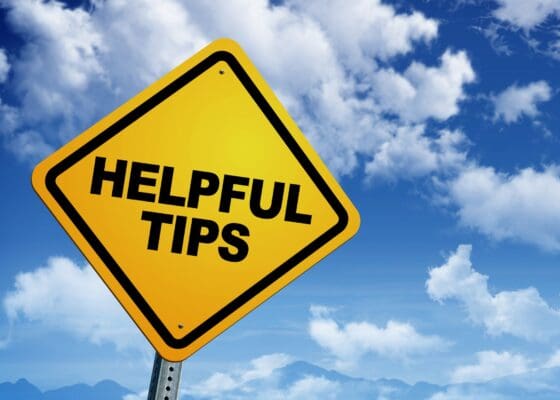
1. Research and Plan: Understand the specific gems common to your chosen location. Each mining spot in Virginia has its specialties, and familiarizing yourself with them will help hone your search.
2. Start Early: The early bird gets the worm, or in this case, the gemstone! Starting early ensures you have ample time to explore, and in many locales, it means a lesser crowd.
3. Patience is Key: Gem mining isn’t about instant gratification. It’s the persistent chipping, sifting, and searching that often leads to the most rewarding finds.
4. Join a Group or Club: Especially if you’re new to the hobby, joining a local gem or mineral club can be beneficial. Experienced members can offer guidance, and there’s an added joy in sharing discoveries with fellow enthusiasts.
5. Follow Previous Successes: If a particular area of a mine or river has yielded good finds in the past, there’s a chance there’s more to be discovered. Nature often deposits gems in clusters.
6. Be Environmentally Conscious: Always fill in holes after digging and avoid disrupting local flora. Leave the site as you found it, ensuring it remains pristine for future miners and nature enthusiasts.
7. Wear Comfortable Clothing: Depending on the location, you might be standing in water, sitting on rocky terrains, or digging into the earth. Wear clothes you don’t mind getting dirty, and consider layers to adjust for Virginia’s varied weather.
8. Stay Hydrated and Fueled: Mining can be more physically demanding than it appears. Carry ample water and snacks to keep your energy up throughout the day.
9. Educate Yourself on Local Regulations: We can’t stress this enough. Understand the rules of the specific site you’re visiting, whether it’s regarding permits, restricted areas, or the volume of gems you can take home.
10. Celebrate the Small Finds: While you might be on the lookout for large, gleaming gemstones, don’t discount the smaller finds. Often, these hold unique beauty and value, and they all contribute to the overall experience.
Ultimately, gem mining in Virginia is as much about the journey as it is about the finds. It’s a chance to connect with nature, learn about geology, and immerse oneself in the thrill of discovery. So, take a deep breath, embrace the adventure, and let Virginia’s rich lands reveal their secrets to you.
Handling Your Gemstone Finds
Discovering a gemstone during your mining adventure can elicit a rush of excitement, but once you’ve made your finds, it’s essential to know how to care for, preserve, and display them. Here’s a comprehensive guide to handling the treasures you unearth in Virginia’s rich terrains:

1. Initial Cleaning: Begin by washing your gemstones in water to remove any loose dirt or mud. A soft brush, like a toothbrush, can help get into crevices and provide a more thorough clean. Avoid using harsh chemicals, as they can damage certain stones.
2. Proper Storage: Until you decide on their ultimate destination, store your gemstones individually in soft cloth pouches or padded jewelry boxes. This prevents them from scratching one another and protects them from external damages.
3. Identification: If you’re unsure about your find, invest in a good gemstone guidebook specific to Virginia or consult a local gemologist. Understanding what you’ve found can increase your appreciation for the stone and help determine its value.
4. Display: Consider purchasing display cases or shadow boxes if you wish to showcase your collection. This not only enhances their appearance but also provides protection from dust and potential damage.
5. Cutting and Polishing: Some gemstones reveal their true beauty after being cut and polished. If you believe your find could benefit from this, seek out a reputable gem cutter or lapidary to bring out the stone’s inner brilliance.
6. Jewelry Setting: Turning your gemstone into a piece of jewelry, like a pendant or ring, can be a wonderful way to showcase and enjoy your find daily. Local artisans or jewelers can often provide custom settings.
7. Documentation: Keep a journal or log of your finds. Note down the date, location, and any particular memories associated with each gemstone. This adds a personal touch to your collection and can be invaluable if you ever decide to sell or appraise your gems.
8. Value Appraisal: If you believe you’ve stumbled upon a particularly valuable stone, it’s worth getting it appraised by a professional. This not only provides an idea of its worth but is also essential for insurance purposes.
9. Care and Maintenance: Over time, gemstones may lose some of their luster. Regularly cleaning them with appropriate methods, based on the gem type, ensures they remain vibrant and captivating.
10. Share Your Finds: Join online forums or local gem enthusiast groups. Sharing your discoveries, gaining insights from others, and being part of a community can enhance the overall gem mining experience.
In essence, the treasures you uncover in Virginia’s mines are more than just shiny stones; they’re a tangible link to the geological past and your personal memories. Handling them with care ensures they remain cherished keepsakes for years to come.
Famous Gemstone Finds in Virginia
Virginia, with its rich geological history, has been the site of numerous remarkable gemstone discoveries. These finds, celebrated by both miners and gem enthusiasts, are testament to the state’s abundant mineral wealth. Let’s delve into some of the most notable gemstone finds that have graced Virginia’s history:
1. The ‘Hogtown Crystal’: Unearthed in Amelia County, this colossal quartz crystal weighed in at an astonishing 927 pounds! Found in the early 20th century, it remains one of the most significant crystals ever discovered in the state.
2. Hiddenite of Rutherford Mines: Virginia’s Rutherford Mines in Amelia County became famous in the 1880s for its hiddenite, a variety of spodumene. These green gems, similar in appearance to emeralds, have garnered significant attention from collectors and jewelers alike.
3. Unakite Discoveries: First discovered in the Unaka Range of the Appalachians, Virginia’s Blue Ridge region has revealed vast quantities of this unique, green and pink gemstone. Given its origin, the stone was aptly named Unakite.
4. Fairy Stone Crosses: The unique crystal crosses, known as staurolite, are notably found in Patrick County. Virginia’s Fairy Stone State Park is named after these intriguing formations, which local legends say are tears of fairies shed over the death of Christ.
5. Amazonite of Morefield Mine: Located in Amelia County, the Morefield Mine has been a popular spot for amazonite, a bright green feldspar. Some of the highest quality amazonite in the United States has been sourced from this location.
6. Virginia’s Gold Rush: While not gemstones, gold discoveries in the 19th century, notably in Spotsylvania and Orange counties, cannot go unmentioned. Numerous nuggets, some weighing several pounds, have been unearthed, making it a focal point for prospectors.
7. Garnet Deposits: Abundant garnet crystals, ranging from deep reds to purples, have been frequently found in Amelia, Nelson, and Goochland counties, with some pieces displaying gem-quality clarity and brilliance.
8. Dravite Tourmaline: A notable discovery from Goochland County, these brownish tourmaline specimens have caught the attention of collectors for their size and well-defined crystal structures.
9. Spectacular Sapphires: While sapphires are more commonly associated with other states, Virginia’s Buckingham County has surprised miners with occasional sapphire finds, adding to the state’s mineral diversity.
10. Rockbridgeite Specimens: These distinctive greenish-black crystals, significant for collectors, have been discovered in iron mines of the state, particularly in the Buena Vista City area.
These celebrated finds showcase the diverse and rich mineralogical tapestry of Virginia. For the enthusiastic gem hunter, they serve as both inspiration and a testament to the treasures awaiting discovery beneath Virginia’s soil.
Additional Gem Mining Opportunities
Venturing beyond Virginia’s borders, one can discover a wealth of gem mining opportunities in neighboring states. Each state offers a unique geological landscape and a distinct array of gemstones awaiting the passionate prospector. Here’s a glance at the neighboring states and their gem mining potential:
1. North Carolina Gem Mining: Famous for its blue sapphires, emeralds, and the legendary Hiddenite, North Carolina is a gem hunter’s paradise, boasting multiple public dig sites.
2. Maryland Gem Mining: While known for its gold finds, Maryland also offers the opportunity to hunt for agates, jasper, and various fossils, enhancing its allure for collectors.
3. West Virginia Gem Mining: Rich in coal, this state also presents finds like flint, quartz, and even occasional deposits of garnet for the diligent miner.
4. Kentucky Gem Mining: Beyond its famous agate, Kentucky’s mineral-rich regions also produce beautiful quartz crystals and colorful fluorite specimens.
5. Tennessee Gem Mining: With sites famous for sapphires, rubies, and even freshwater pearls, Tennessee offers a diverse array of gem mining locales.
Exploring these states broadens the gem hunting experience, providing a richer understanding of the Appalachian region’s mineral diversity and giving enthusiasts more terrains to conquer in their quest for nature’s treasures.
Your gem mining adventure awaits! Learn more with our comprehensive Gem Mining Near Me guide.
Conclusion: Discovering Virginia’s Hidden Jewels & Beyond
The allure of gem hunting in Virginia is undeniable. From the rolling Blue Ridge Mountains to the historic gold regions of Spotsylvania, the state invites both amateur and seasoned prospectors to embark on an adventure of discovery. Every dig, sift, and exploration brings with it the possibility of unearthing nature’s hidden jewels, connecting us to the deep geological tapestry of the land.
Yet, for those who might find the travel, costs, or seasonal constraints a challenge, there’s an exciting alternative: a Gem Mining Kit. This curated collection allows enthusiasts to experience the thrill of mining without leaving their homes. Each kit contains an assortment of rough gemstones from various locations, waiting to be discovered. It’s an ideal way to introduce the young ones to geology, share a family activity, or even host a gem-themed event. In essence, whether you’re trekking Virginia’s terrains or sifting soil at your kitchen table, the quest for gems remains an ever-enticing journey.




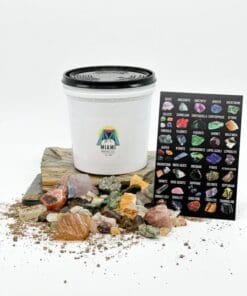
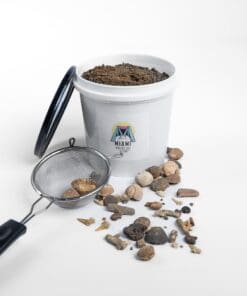
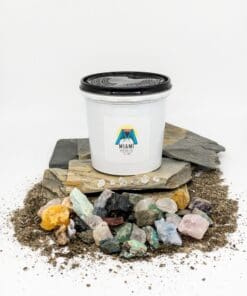
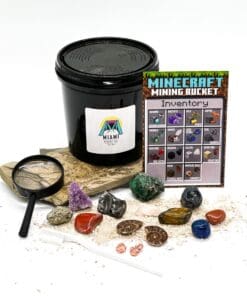

Where can i sign up or is this place free to the public? Do they require registry or admission prices